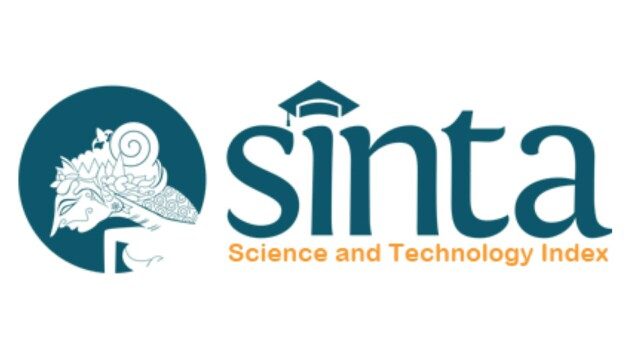Implementasi Kalman Filter pada Sistem Pemetaan dengan Sensor Ultrasonik
Sari
The rapid advancement of technology compels social beings to continuously adapt. Robotics, as one of the widely used technologies, offers advantages in solving everyday problems, including room mapping. One of the technologies used to carry out mapping is ultrasonics. Ultrasonic technology utilizes high-frequency sound waves to detect and measure the distance of objects, then converts the reflected wave data into distance or position. A room mapping system uses ultrasonic sensors connected to a central rotating point, generating rotational angle and distance measurements that can be mapped in a graph. The advantages of ultrasonic technology include the ability to map without physical contact and resistance to light and environmental influences, making it ideal compared to optical sensors. However, this technology also has drawbacks in measurement accuracy on non-ideal surfaces. The implementation of the Kalman filter is a solution for reducing fluctuations in ultrasonic measurement results. The effectiveness of the Kalman filter in mapping systems with ultrasonic sensors is measured against the distance results compared to the ideal distance. The results show a reduction in measurement error values with the Kalman filter. Further development is necessary to improve precision and accuracy, making ultrasonic technology more effective in robotics and room mapping applications.
Kata Kunci
Teks Lengkap:
PDFReferensi
H. Choi et al., “On the use of simulation in robotics: Opportunities, challenges, and suggestions for moving forward,” Proceedings of the National Academy of Sciences, vol. 118, no. 1, p. e1907856118, 2021, doi: 10.1073/pnas.1907856118.
J. Duan, “Research on SLAM Mapping for Multi sensor Fusion in Smart Factories,” in 2023 2nd International Symposium on Sensor Technology and Control (ISSTC), 2023, pp. 181–186. doi: 10.1109/ISSTC59603.2023.10280998.
A. A. Ravankar, A. Ravankar, T. Emaru, and Y. Kobayashi, “A hybrid topological mapping and navigation method for large area robot mapping,” in 2017 56th Annual Conference of the Society of Instrument and Control Engineers of Japan (SICE), 2017, pp. 1104–1107. doi: 10.23919/SICE.2017.8105770.
Z. Huang, L. Wan, M. Sheng, J. Zou, and J. Song, “An Underwater Image Enhancement Method for Simultaneous Localization and Mapping of Autonomous Underwater Vehicle,” in 2019 3rd International Conference on Robotics and Automation Sciences (ICRAS), 2019, pp. 137–142. doi: 10.1109/ICRAS.2019.8809014.
M. Rivai, D. Hutabarat, and Z. M. Jauhar Nafis, “2D mapping using omni-directional mobile robot equipped with LiDAR,” Telkomnika (Telecommunication Computing Electronics and Control), vol. 18, no. 3, pp. 1467–1474, 2020, doi: 10.12928/TELKOMNIKA.v18i3.14872.
I. Abadi and N. El-Sheimy, “Manhattan World Constraint for Indoor Line-based Mapping Using Ultrasonic Scans,” in 2022 IEEE 12th International Conference on Indoor Positioning and Indoor Navigation (IPIN), 2022, pp. 1–8. doi: 10.1109/IPIN54987.2022.9918099.
A. Biswas, S. Abedin, and M. A. Kabir, “Moving Object Detection Using Ultrasonic Radar with Proper Distance, Direction, and Object Shape Analysis,” Journal of Information Systems Engineering and Business Intelligence, vol. 06, pp. 99–111, Jul. 2020, doi: 10.20473/jisebi.6.2.99-111.
T. Q. Tran, A. Becker, and D. Grzechca, “Environment Mapping Using Sensor Fusion of 2D Laser Scanner and 3D Ultrasonic Sensor for a Real Mobile Robot,” Sensors (Basel), vol. 21, 2021, [Online]. Available: https://api.semanticscholar.org/CorpusID:234743482
R. Ragavi, A. Ramya, G. Sowndharya, and S. Sunmathy, “Ultrasonic Radar Module Design Using Arduino,” Irish Interdisciplinary Journal of Science & Research, vol. 07, pp. 65–70, Jul. 2023, doi: 10.46759/IIJSR.2023.7408.
M. Tabatabaeipour et al., “Application of ultrasonic guided waves to robotic occupancy grid mapping,” Mech Syst Signal Process, vol. 163, p. 108151, Jul. 2021, doi: 10.1016/j.ymssp.2021.108151.
Z. Rong, X. Chen, M. Fu, L. Zhou, D. Wu, and L. Zheng, “Research on data filtering method of ultrasonic intelligent water meter based on Kalman filter,” in 2022 34th Chinese Control and Decision Conference (CCDC), 2022, pp. 5146–5151. doi: 10.1109/CCDC55256.2022.10034072.
X. Quan et al., “An investigation on bolt stress ultrasonic measurement based on acoustic time difference algorithm with adaptive hybrid extended Kalman filter,” Measurement, vol. 186, p. 110223, 2021, doi: https://doi.org/10.1016/j.measurement.2021.110223.
A. Al Tahtawi, “Kalman Filter Algorithm Design for HC-SR04 Ultrasonic Sensor Data Acquisition System,” IJITEE (International Journal of Information Technology and Electrical Engineering), vol. 2, Jul. 2018, doi: 10.22146/ijitee.36646.
G. Welch and G. Bishop, “An Introduction to the Kalman Filter.” [Online]. Available: http://www.cs.unc.edu/~gb
DOI: https://doi.org/10.24176/simet.v15i2.13231
Refbacks
- Saat ini tidak ada refbacks.
Indexed by:





Simetris : Jurnal Teknik Mesin, Elektro dan Ilmu Komputer is licensed under a Creative Commons Attribution-NonCommercial-ShareAlike 4.0 International.
Dedicated to:













